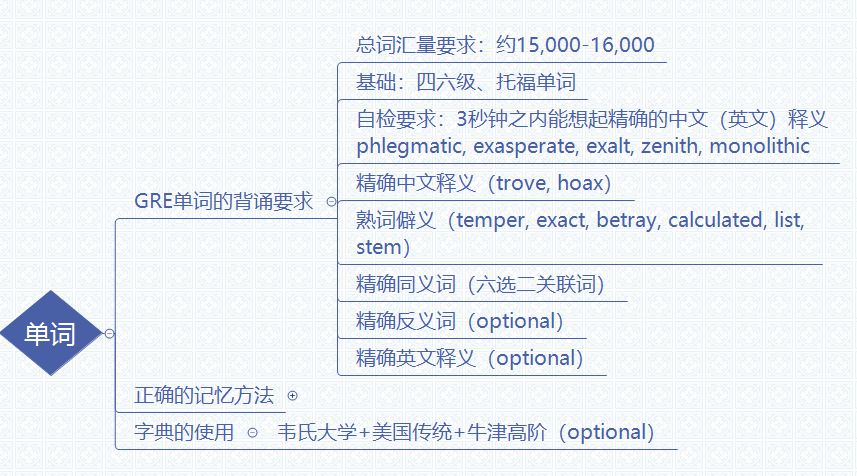你的雅思阅读复习好了吗?阅读解题技巧为你锦上添花这篇文章在雅思阅读备考的冲刺阶段或者说后半段,可以作为一个思路上的提升来看。下面小编就和大家分享,来欣赏一下吧。
你的雅思阅读复习好了吗?阅读解题技巧为你锦上添花
你的雅思阅读复习好了吗?阅读解题技巧为你锦上添花为大家带来雅思阅读中关于解题技巧的一些见解。一般我们在说雅思阅读的解题技巧时,都会分题型进行说明,如雅思阅读填空题的解题技巧等等。而本文向大家说明,其实即使阅读的题型不同,所用到的技巧不同,他们的背后考察的雅思阅读能力都是一样的。
在雅思培训中,老师基本上讲的都是做题技巧,而阅读技能本身讲的很少。因为讲做题技巧最有针对性,学生来听课的主要目的也是希望知道怎么做题,讲阅读技能本身就是吃力不讨好的工作。因此大部分老师都在分析总结各种题型的解题特点,解题规律等。但多年的教学经验告诉我,有些题目是不能纯粹靠做题技巧来解决的,必须结合一定的阅读技能才能顺利解出。否则,很多做题技巧就难免有牵强附会之嫌。而且,雅思阅读题型有10种之多,这么多纷繁复杂的题型似乎又各自有着自己的一些解题技巧和解题步骤,在考试时一篇文章后面往往会有几种题型,而考生需要记清不同的解题方法会显得力不从心,手忙脚乱。而其实从雅思阅读的出题思路来看,不同的题型测试的技能确实有些不同,但很多时候是重叠的,过于强调题型本身的差异而忽略这些题型背后测试的阅读技能只会导致学生机械地使用一些解题步骤和所谓的技巧,而忽略在解题背后测试的阅读技能。
我们举几道例题来说明其实很多不同的题型背后测试的阅读技能其实是一样的。
剑三Test 3 Question 7-12
这道题是一道Matching题,要考生去Match each exhibit with the collection types。而题目要求里面告诉我们题干中的each exhibit是选项中的collection types的具体例子(examples)。扫描题干和选项之后应该知道定位词应该是题干,因为题干中含有一些大写的装有名词,例如:Bolivian, Indian, Arctic 等。带着这些词回去定位,可以迅速找到是在文章的第三段当中。这个时候我们需要清楚地知道我们找到的这些exhibit是具体的例子,需要找到的是这些exhibit属于哪些collection types。也就是说这道题目是想测试我们通过例子找到其对应的主题。我们必须知道在雅思学术性阅读文章中,一般作者都会先说主题,再举具体的例子来支持这个主题,并往往会在主题和例子之间使用一些举例的连接词,例如for example, for instance, such as, like等等。了解这个阅读技能就能让我们在找到Bolivian textile这个例子的时候迅速往前扫读,关注一些举例连接词前面的某个词,往往主题也就是答案就在这个举例连接词的前面。果然,我们很快就可以在Bolivian textile这个词前面找到一个for instance,而且for instance前面有个破折号,破折号一般是作者用来表示展开说明作用的,所以破折号前面的那个名词短语technical series应该就是我们要搜寻的答案,迅速的扫描选项中果然有这个短语,那么这道题的答案就是technical series的首字母缩写TS。其他的题以此类推。
再如剑五Test 1 Question 33
这是一道选择题,题干是 The writer quotes from the Worldwide Fund for Nature to illustrate how
A influential the mass media can be
B effective environmental groups can be
C the mass media can help groups raise funds
D environmental groups can exaggerate their claims
定位词肯定是大写的Worldwide Fund for Nature。根据这个定位词我们很快可以定位到是在文章的第五段当中的这句话:In 1997, for example, the Worldwide Fund for Nature issued a press release entitled: “Two thirds of the world’s forests lost forever.” The truth turns out to be nearer 20%。这道题是问作者引用了Worldwide Fund for Nature的话是为了illustrate(举例说明)什么。也就是说出题人的考察目的是希望我们能在原文中读出作者使用这个quote是为了说明什么观点。我们定位到的这句话是这个quote本身,quote其实也就是例证,一样都是为了说明作者的某个观点。原文这句话中的for example这个举例连接词就清晰地告诉了我们这个例子是为了说明前面一个观点。所以原文中的for example 前面的句子应该就是这道题的答案,往前一扫发现这么一句话:Understandably, perhaps, they sometimes overstate their arguments。再和选项匹配一下,我们就能发现这句话就是D选项的一个同义转述:they就是上文中提到的environmental groups,overstate就是题干中exaggerate的替换,而arguments就是题干中的claims。因此答案为D。
再如剑六TEST 1 Question 23
Modern cargo-handling methods have had a significant effect on _____ as the business of moving freight around the world becomes increasingly streamlined. Manufacturers of computers, for instance, are able to import…
这道summary题第一个空格很多同学都填不出来。因为题目要求中没有告诉我们是哪几段话的summary,含有空格的这句话中也没有一个特别具体独特的定位词,因此定位特别难。由于这句话其实是文章前面好几段话的一个总结,所以要填出这个空格里面的名词(也就是cargo-handling methods 影响的东西)确实比较困难,因此从这句话定位似乎不大可行。但是,只要同学们留意summary的第二句话,就发现第二句话其实是第一句话的一个例证,而且出题人为了让这两句话关系鲜明,他特意在这两句话之间加了一个for instance。那么我们就可以从第二句话入手进行定位,如果我们能根据manufacturers of computers这个定位词在文章中找到相关的一句话,然后再根据例子是为了说明之前提到过的主题这个阅读技能往前扫读去搜寻答案。很快我们就可以根据manufacturers of computers这个定位词定位到E段。因为E段主要是在说电脑制造的。而E段的第一句话就是:To see how this influences trade, consider the business of making disk drives for computers。读到这两句话的时候,问问自己这两句话之间的关系是什么?其实就是主题+例子的关系,consider这样的词也是典型的主题和具体例子之间的连接词。那么答案自然就是前面的trade,因为题干中的have had a significant effect on 就等于原文中的influences,modern cargo-handling methods就是原文中的this指代关系。
综上所述,这三种题型分别是配对题、选择题和填空题,虽然题型不一样,但这些不同题型背后都在测试同一个阅读技能,那就是读出主题和例子之间的关系。雅思的文章是学术性文章,所以作者一般先说主题,再举例子说明这个主题。各种例子(包括数据,引言等)都是为了说明这个主题,而且例子和主题之间往往会有for example, for instance,consider这样的连接词来表明这种关系。出题人其实就是希望我们能够看出这一点,不管是通过例子找主题,还是通过主题找例子。
雅思阅读考试中语意推断技巧
雅思阅读题型多变,考点在文中飘忽不定。但是作为国际化的学术英语考试,自然有其严肃稳定的考查目的和内容,始终会把对英语篇章结构和行文规律的理解作为阅读的一项基本要求重点考查。因此加强这方面的学习研究是从根本上提高应试能力的途径。本文仅从英语行文结构中逻辑关系词的作用及其阅读功能这一具体方面作初步探讨。
关于逻辑关系词在阅读中的作用,我们首先来看一段文字:
the discourse markers signal relationships: between different parts of the discourse … the main reason for studying them is their usefulness in helping the reader to work out the meaning of difficult text. They often show the relationship the writer intends between two parts of the text, so if you can understand one part, the discourse marker is a possible key to the other part. (Christine Nuttall, 1996. Teaching Reading Skills in a Foreign Language, Heinemann)
关于“discourse marker”,P.H.Matthews在其Oxford Concise Dictionary of Linguistics (Oxford University Press) 一书中是这样描述的:Any of a variety of units whose function is within a larger discourse rather than an individual sentence or clause: e.g. but then in But then he might be late. “discourse marker”虽然范围更加广泛一些,但从以上文字不难看出,它包括了我们所熟悉的逻辑关系词(即文章中用于表示并列,转折,举例,因果,递进,让步,总结等逻辑关系的固定单词或词组)。也由此可见,特别重视形式逻辑和思维分析的英语行文,在词语之间和句子之间往往会借助各种逻辑关系词清楚表达思维逻辑和语意关系。因此了解和掌握逻辑关系词可以帮助我们把握文章中语意的转换和发展,理解文章重点表达的意思。
具体到雅思阅读,逻辑关系词在解题中体现出两大功能 :
语意推断
语意推断主要是运用于重点题型之一的摘要题(Summary)。具体是指根据空格所在句及前后句的逻辑关系词,分析词语之间,句子之间的语意关系,推断出所缺单词的大致含义。
例如:
1.剑4 / P77 / Q38
Some corpora include a wide range of language while others are used to focus on a particular linguistic feature.
根据while这个表示对比或转折的逻辑关系词,可以判断它前后部分是对比或反义关系。“a wide range of language”指的是语言研究的广泛的各个方面,可以预判空格处应是指具体的方面。
2.剑1 / P20 / Q4-5
The very first fire-lighting methods involved the creation of friction by, for example, rapidly rotating a wooden stick in a round hole.
根据介词“by”和“for example”这个表示举例的逻辑关系词,可以预判第二个空格应是和“creation of friction”(产生摩擦)的具体动作有关的词。
3.剑1 / P20 / Q6
The use of percussion or persistent chipping was also widespread in Europe …
根据表示并列的逻辑关系词or,可以判断它前后部分是并列关系。Chipping是“削,凿”的意思,可以预判空格处应是类似意思的词。
雅思考试阅读辅导资料
IT IS one of the oldest debates in education. Should teachers tell pupils the way things are or encourage them to find out for themselves? Telling children "truths" about the world helps them learn those facts more quickly. Yet the efficient learning of specific facts may lead to the assumption that when the adult has finished teaching, there is nothing further to learn—because if there were, the adult would have said so. A study just published in Cognition by Elizabeth Bonawitz of the University of California, Berkeley, and Patrick Shafto of the University of Louisville, in Kentucky, suggests that is true.
Dr Bonawitz and Dr Shafto arranged for 85 four- and five-year-olds to be presented, during a visit to a museum, with a novel toy that looked like a tangle of coloured pipes and was capable of doing many different things. They wanted to know whether the way the children played with the toy depended on how they were instructed by the adult who gave it to them.
One group of children had a strictly pedagogical introduction. The experimenter said "Look at my toy! This is my toy. I'm going to show you how my toy works." She then pulled a yellow tube out of a purple tube, creating a squeaking sound. Following this, she said, "Wow, see that? This is how my toy works!" and then demonstrated the effect again.
With a second group of children, the experimenter acted differently. She interrupted herself after demonstrating the squeak by saying she had to go and write something down, thus suggesting that she might not have finished the demonstration. With a third group, she activated the squeak as if by accident. To a fourth, the toy was simply presented with the comment, "Wow, see this toy? Look at this!"
After these varied introductions, the children were left with the toy and allowed to play. They might discover that, as well as the squeaker, the toy had a button inside one tube which activated a light, a keypad that played musical notes, and an inverting mirror inside one of the tubes. All the children were told to let the experimenter know when they had finished playing and were asked by the instructor if they were done if they stopped playing for more than five consecutive seconds. The entire interaction was recorded on video.
Footage of each child playing was passed to a research assistant who was ignorant of the purpose of the study. The assistant was asked to record the total playing time, the number of different actions the child performed, the time spent playing with the squeak, and the number of other functions the child discovered.
The upshot was that children in the first group spent less time playing (119 seconds) than those in the second (180 seconds), the third (133 seconds) or the fourth (206 seconds). Those in the first group also tried out four different actions, on average. The others tried 5.3, 5.9 and 6.2, respectively. A similar pattern (0.7, 1.3, 1.2 and 1.2) pertained to the number of functions other than the squeak that the children found.
The researchers' conclusion was that, in the context of strange toys of unknown function, prior explanation does, indeed, inhibit exploration and discovery. Generalising from that would be ambitious. But it suggests that further research might be quite a good idea.
雅思阅读解题技巧相关文章:
1.GRE阅读遭遇难题4个通用解题技巧
2.新GRE阅读快速解题方法
3.托福阅读准狠的三大技巧
雅思阅读高分解题技巧
上一篇:雅思阅读搭配题的正确复习方法
下一篇:返回列表






